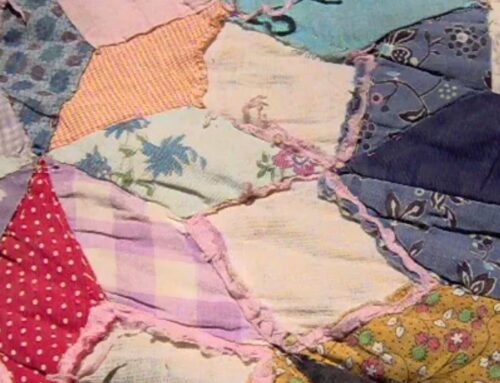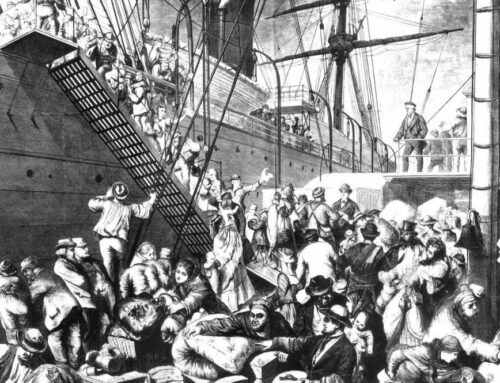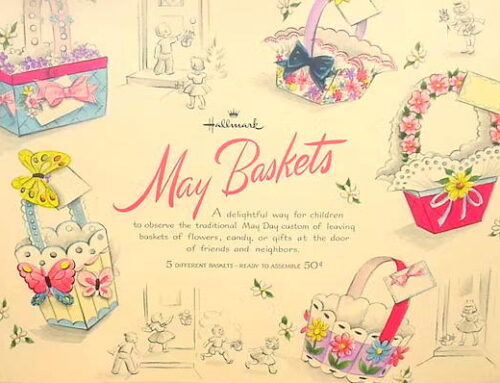Victorian Slum House on PBS – another entry in the
historical reality shows produced by BBC/PBS – will educate you.
You’ll learn what a Twopenny Hangover is. And a Penny Sit-up, or a Fourpenny Coffin. Even if you don’t have family who lived in these circumstances, Victorian Slum House is very interesting and well done. About the show:
A group of modern-day families, couples, and individuals recreate life in London’s East End as their forbearers once lived between 1860-1900. Faced with the virtually impossible task of earning enough money to pay the rent and put food on the table, the participants experience first-hand the tough living and working conditions endured by the millions that made up the urban poor in Victorian Britain. It’s an eye-opening experience for the participants as they each confront the harsh realities of the past and together lay the groundwork for welfare reform in the twentieth century.
Happily, the Victorian Slum House series is cast not just with willing participants, but also descendants of the East End poor, who strive to understand what life was like for their ancestors. This is in notable contrast to other entries in their reality series, that seemed (to me) to be cast with and focused on those who constantly and unfavorably compared life on the show to their lives in the present.
Free of those restraints, viewers of Victorian Slum House learn about piecework at home for women (in addition to housework) and trades or unskilled labor for men; living conditions in tenements; the difficulty of earning enough to pay rent; and the utter lack of social safety nets. After the first episode, I had the same sensations about cruel living conditions as my visit to the Tenement Museum.
East End Shelters
The shelters went by many different names depending on the cost and type of sleeping or in some cases sitting arrangements available. You might find yourself at a Penny Sit-up, a Two Penny Hangover, or a Four Penny Coffin (or just Coffin House). These shelters did not provide the best of conditions, but they were considered a well-meaning, inexpensive, and compassionate attempt to deal with the heightened emergence of homelessness at the time. For those that could afford them, the shelters served as a better alternative to sleeping outside in a wet doorway. The shelters provided warmth, sometimes food, and a certain amount of safety, all things in short supply out on the streets. (wonderfulcollection.com)
Also worth noting: Allison Meier‘s article, Coffin Beds and Penny Sleeps: An Exhibition on Victorian Homelessness.

Salvation Army homeless clients at Blackfriars, c. 1900 (Courtesy Wikipedia)
Penny Sit-up
For a penny, homeless people were allowed to sit on a bench all night, but not allowed to sleep.

Two-penny hangover (Wikipedia)
Twopenny Hangover
For an additional penny, homeless people sat on benches, where they were allowed to “hangover” a rope strung across the bench, sleeping fitfully. Clients were not allowed to lie down and sleep. The rope was cut at 5 a.m. to send people on their way.

A “coffin house” for men – London’s Bourne Street shelter, c. 1900. (Wikipedia)
Fourpenny Coffin
For four pennies per night, a homeless person could stay at a “coffin house,” where food and a chance to lie flat in a coffin-sized space were made available.
Episodes of Victorian Slum House on PBS
Episode 1 | The 1860s (Premieres Tuesday, May 2)
Follow participants as they move into an 1860s tenement made up of sparse rooms, a shared water pump and outhouses. They seek to make a living by matchbox making, wood turning and the rag trade, work once done by their impoverished forebears.
Episode 2 | The 1870s (Premieres Tuesday, May 9)
Witness a dire economic depression heightened by the arrival of Irish migrants seeking work. Daily, the slum dwellers toil to fulfill clothing orders and make artificial flowers for factories. Some won’t be able to settle their debts.
Episode 3 | The 1880s (Premieres Tuesday, May 16)
Despite high unemployment and intolerable conditions, people flock to London, desperate for work. When curious upper-class visitors are permitted to visit the slum as tourists, the participants realize how precarious their situation truly is.
Episode 4 | The 1890s (Premieres Tuesday, May 23)
Enter the 1890s, when mass manufacturing and social reform offer a bit of hope for some of the residents, while others are plagued by a water shortage that dashes hopes for a promising laundry business.
Episode 5 | The 1900s (Premieres Tuesday, May 30)
Observe the social changes the slum dwellers face as they move into the 20th century. A few families prosper, but others continue to face the poverty endemic in Britain. See what steps are finally taken to alleviate the plight of the poor.
Share Jane:
- Click to share on Facebook (Opens in new window) Facebook
- Click to share on Pinterest (Opens in new window) Pinterest
- Click to share on X (Opens in new window) X
- Click to share on LinkedIn (Opens in new window) LinkedIn
- Click to print (Opens in new window) Print
- Click to email a link to a friend (Opens in new window) Email





It happened by pure chance we came across this program tonight..May 16th. My family heritage has roots in London..my great grandfather fled Russia late 1800s. He was a tailor for the Czar and fled to London where he was also a tailor.Being Jewish I am sure life was difficult for him and his family. I cried as I saw and learned of the conditions that his family possibly had to live through. We immigrated to Canada in 1956 and then to the Sates a year later.I still have stron ties to England..Essex and Cornwall. I most definitely want to order this documentary to pass on to my children. Thank you so much.
Cherie, you’re very welcome. Our forebears survived unimaginable conditions.